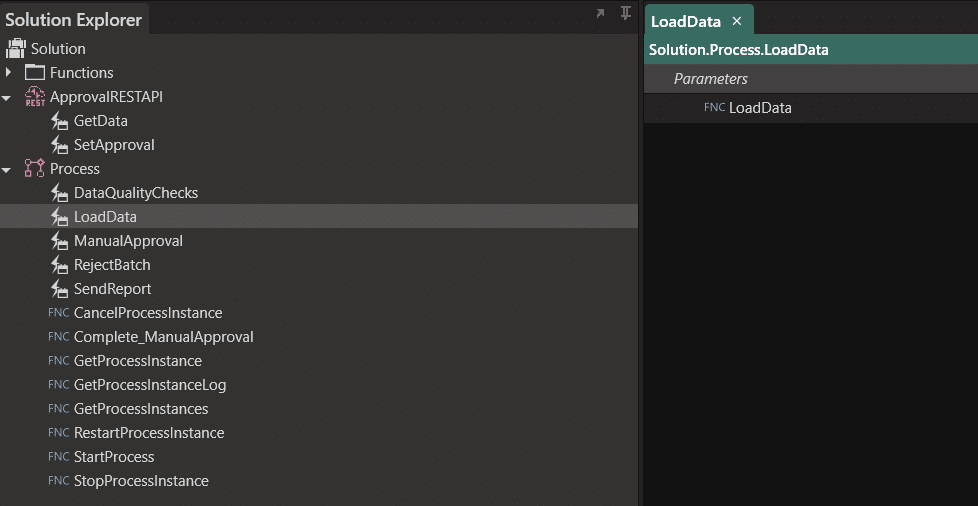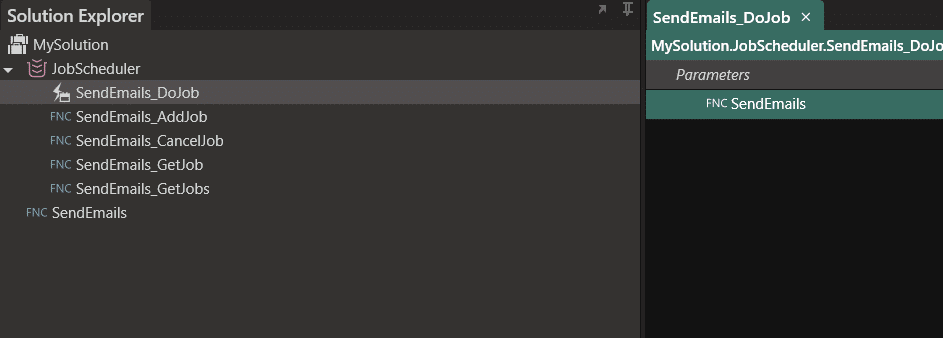Process Automation increases efficiency, reduces costs, and minimizes errors, allowing you to focus on more important tasks.
Some use cases for process automation include:
- Data Loading: Automating data ingestion, cleaning, and governance.
- Sales Processes: Streamlining orders, invoicing, and workflows.
- Client Onboarding: Automating data capture, approvals, and documentation.
- HR Operations: Simplifying onboarding, payroll, and performance reviews.
- IT Support: Automating ticket management or password resets.
Any multi-step business process can be automated, turning it into a valuable asset for any organization.
Back End Process Automation
Linx offers a few options for automation, the most powerful options are:
- Process Automation
- Job-Scheduler
Both options offer a variety of benefits, however if you are automating a single run process or something that does not require extensive logging and that does not have many steps, you will be better off using the Job-Scheduler.
Process Automation
Design your process via BPNM 2.0, Linx will create and facilitate the structure. This service allows for the creation and facilitation of multiple steps, logical flows (decisions) and manual intervention. Tracking and logging is taken care of by the service, meaning that you do not have to build this yourself.
The first step is to create your process via the Linx BPNM editor. Here you create the process with each step (including steps where there will be manual intervention):

Once the process is built in the Linx BPNM editor, it can then be imported into Linx. Importing BPNM Model will create each step in the process, where logic then needs to be added. Steps inside the process automation functions exactly like any other event or function, meaning any functionality in Linx can be used freely.
The process automation service also takes care of instance tracking and logging, done via a database structure hosted on a database of your choosing (such as MS SQL, PostgreSQL, MySQL, SQLite and Mongo)

A process instance is a singular flow of the process workflow. Process instances can be maintained by using the helper functions, whereby process instances can be created, stopped, canceled and where details on process instance can be retrieved.
Job-Scheduler
Another option is to use the Linx JobScheduler, which automates job execution with built-in logging and tracking. It’s ideal for adding structured orchestration beyond the capabilities of a basic timer, offering more robust scheduling and management.
The JobScheduler enables the creation of multiple queues to manage jobs efficiently. These queues handle task execution, tracking, and logging. Scheduling can be set up using cron expressions to automate recurring jobs, such as generating reports or sending emails at specific times.
Queue data can be stored in memory, Microsoft SQL Server, or SQLite, with the JobScheduler’s built-in functions handling data retrieval—no direct database interaction needed.
The JobScheduler is like any other service inside Linx, meaning all other Linx functionality can be used.

